Growing radishes: top tips on how to grow radishes to get a bumper crop
You won’t believe how easy it is growing radishes. With our advice on how and when to grow them, you will be rewarded with a tasty harvest in just four weeks


The trick to growing radishes is a fast turnaround if you want crisp and crunchy ones. Radishes are quick to grow, and you’ll be eating them just a month after germination. Get it right when it comes to how to grow radishes and they will soon become the star of all your summer salads, slaws, stir fries and crudité offerings.
What’s more, all radishes need is fertile soil, moisture and space to thrive. It's not difficult at all. There are a few easy tips to follow for growing radishes, then it's just a few weeks from seed packet to plate. If they get to the plate that is – crunchy radishes picked fresh from the plot and popped straight into your mouth are just the best when it comes to healthy summer snacking.
Whether you're growing radishes as part of your raised garden bed ideas or in pots on a patio, by following our tips you’ll soon be crunching your way through your very own crop of this kitchen garden favorite.
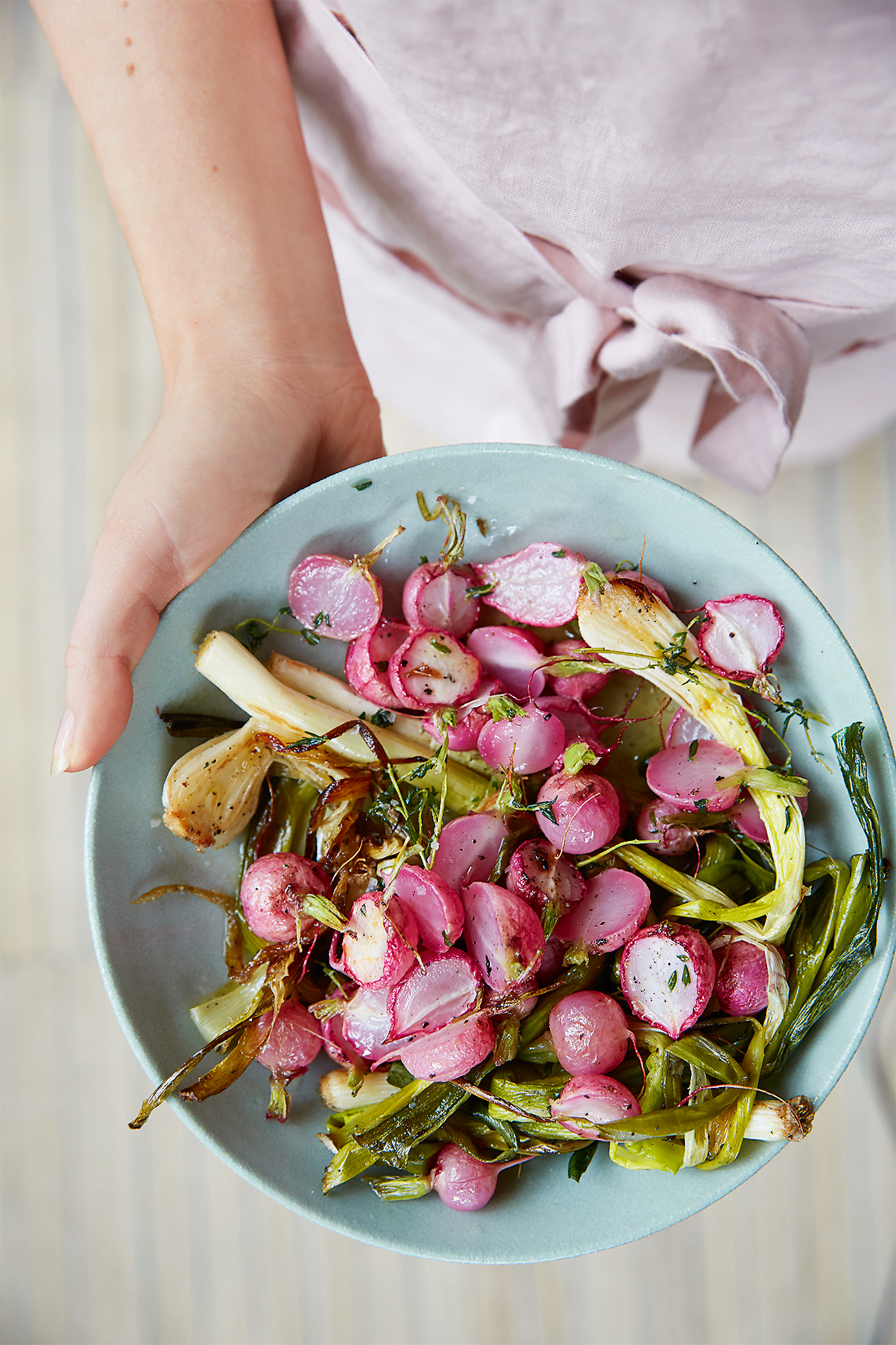
Growing radishes: quick tips for success
- Radishes come in many different shapes, sizes and colors, so they are a great option for including in your kitchen garden ideas. They also have a wide range of tastes, from the long cylindrical French breakfast ones with a crisp peppery taste to watermelon radish, which are slightly sweet.
- It's nose to tail vegetable eating - nothing is wasted, which is one of the big plus points with how to grow radishes. The edible roots may be red, pink or white, and pointed, cylindrical or round. A few varieties are grown for their crunchy seedpods, which are eaten raw. Radishes can also be grown as a cut-and-come-again crop for their spicy leaves.
- These compact plants can be grown in even the smallest of spaces and are great gap-fillers in your small vegetable garden ideas.
- The large oriental radishes like mouli make good winter vegetables.
- In spring, radishes like full sun, but by summer they will grow well in semi-shade.
- Be warned that when growing radishes, they will bolt and become tough if you don’t harvest them fast enough.
- Sow a few radishes at a time so you don’t end up with a glut. If you do end up with a glut, try pickling them so none go to waste.

Is growing radishes easy?
Growing radishes is surprisingly easy. They can be sown in spring and right through summer, and there are also varieties you can plant for winter harvesting. To get a decent crop, the trick to growing radishes is to make sure they’re watered regularly and not cramped in their planting space.
Avoid letting them dry out as they might run to seed and will be tough and pithy to eat. Summer radish is best harvested when still small and tender.
It's also important to choose the right type of radish for the time of year.
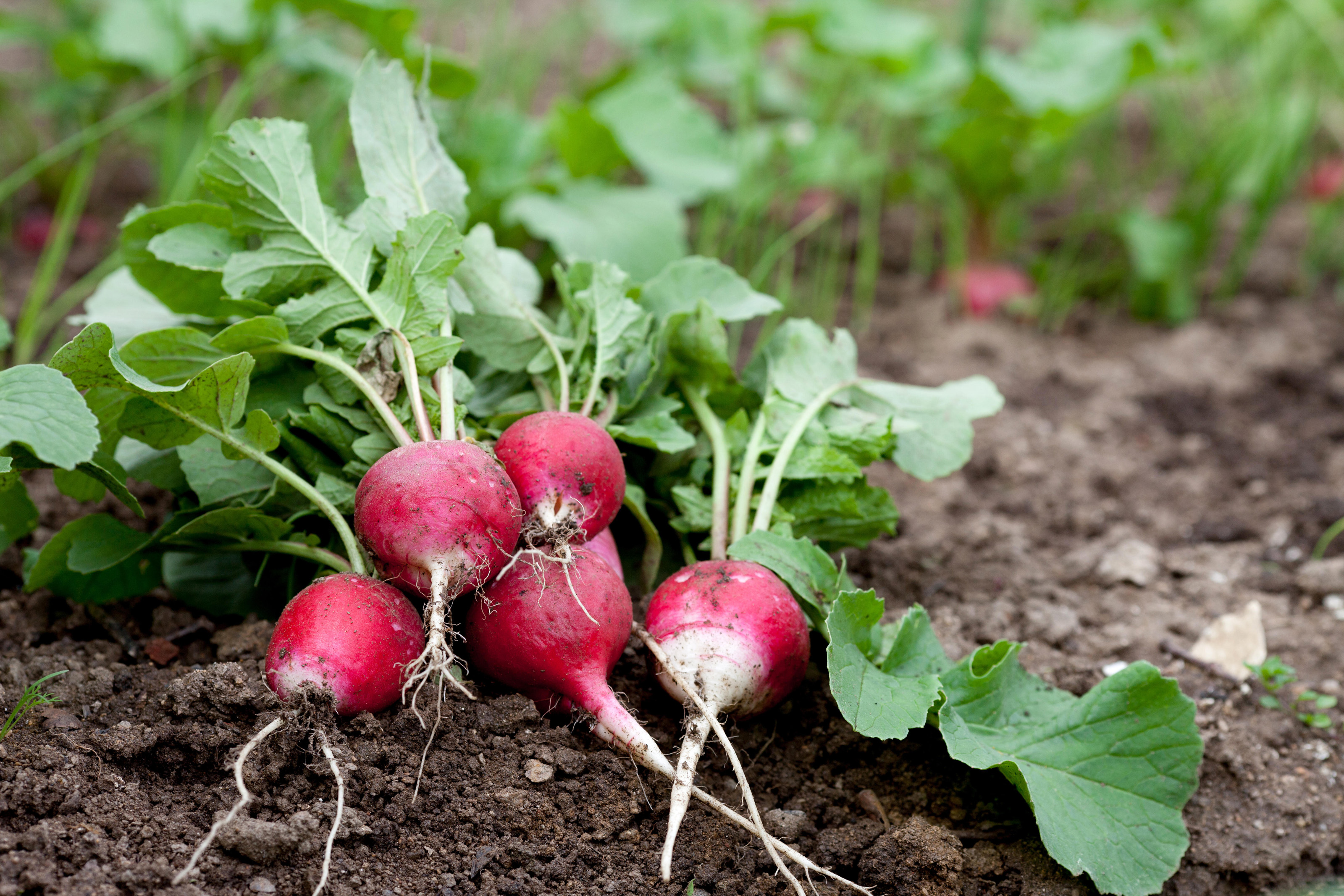
What are the different types of radish?
There are four main groups of radish and it's important to grow the right variety for the time of year. If you grow radish at the wrong time it can lead to problems such as bolting, becoming too leafy at the expense of the root, or the roots becoming woody and unpalatable. Read on to discover the differences to make sure you're up to speed with how to grow radishes in your plot.
- Quick maturing varieties that can be forced like 'French Breakfast' (sow from January)
- Early types that are not forced such as 'Sparkler' and 'Cherry Belle' (sow from March)
- Maincrop and summer varieties such as 'Pink Beauty' and 'Saxa' (sow from April)
- Winter types such as 'Black Spanish Long' (sow from July)

How to sow radish seeds
Radishes can be sown outdoors from later winter (February time) until early autumn (September). Some forcing varieties can be sown under cover in cloches or frames from January. For early and late sowings, use early varieties and protect plants from frost with a cloche or layer of fleece.
For the best results with how to grow radishes, sow seed thinly, in drills 1/2in (1cm) deep. The soil should be dug over so it's a fine tilth and watered with the best garden sprinkler beforehand so it's moist. Thin the seedlings to at least 1.2in (3cm) apart, as overcrowding will make them spindly so the roots won’t develop as well as they should.
You can sow the seeds in grow bags too. It's a tip worth knowing that if you've been learning how to grow tomatoes, at the end of the season after you've harvested all your tomato crops you can use your grow bags again for a second crop and radishes are ideal for this. Always remove as much of the previous crop's roots as you can and loosen the compost with a fork before sowing the seeds.
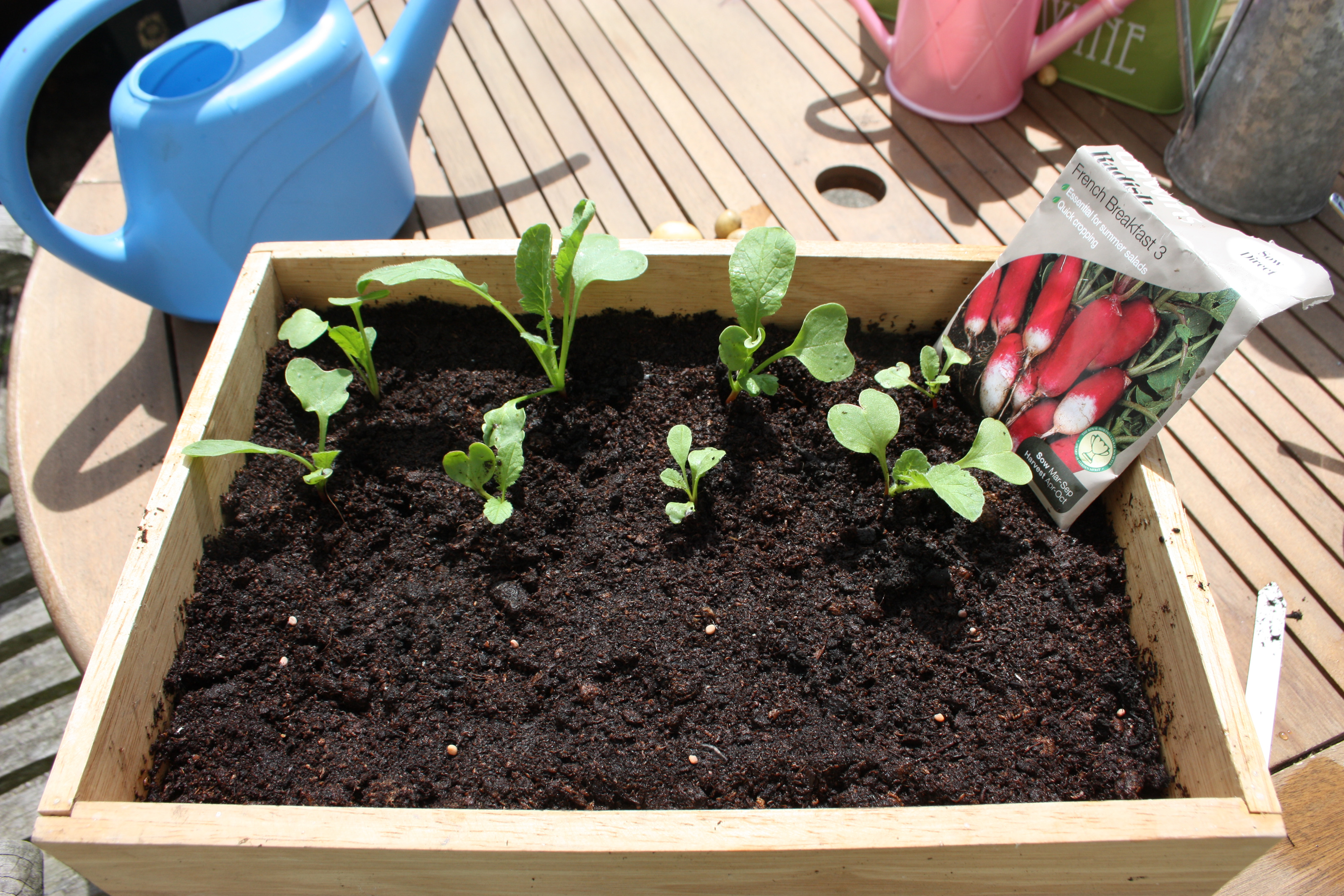
How long do radishes take to grow?
Radishes really are the Speedy Gonzales of the vegetable growing world. They’re one of the quickest to grow, usually ready to harvest around four weeks after sowing. Aim for successional planting – this means sowing small amounts every few weeks and harvesting them a month later. As you harvest, pop more seeds into the gaps to make sure you have a supply right through summer rather than a glut of crops that are all ready to be harvested at the same time.
Pull up radishes as soon as they are mature. They do not last well in the ground, but will store for several days in the fridge if they are first rinsed, patted dry and stored in polythene bags.

How do radishes grow best?
Radishes like fertile, moisture-retentive soil that’s well drained. But don’t add manure as this will lead to more leaves, less radishes.
In dry, hot weather, you'll need to make sure you are watering plants regularly to prevent them from bolting or becoming woody. Irregular watering can result in your radishes splitting, while lush, leafy growth at the expense of the roots may be caused by overwatering.
If you allow the compost to dry out when growing radishes, they will become woody and taste too peppery before they reach a decent size. The best secret for how to grow radishes well is to keep the soil constantly moist.
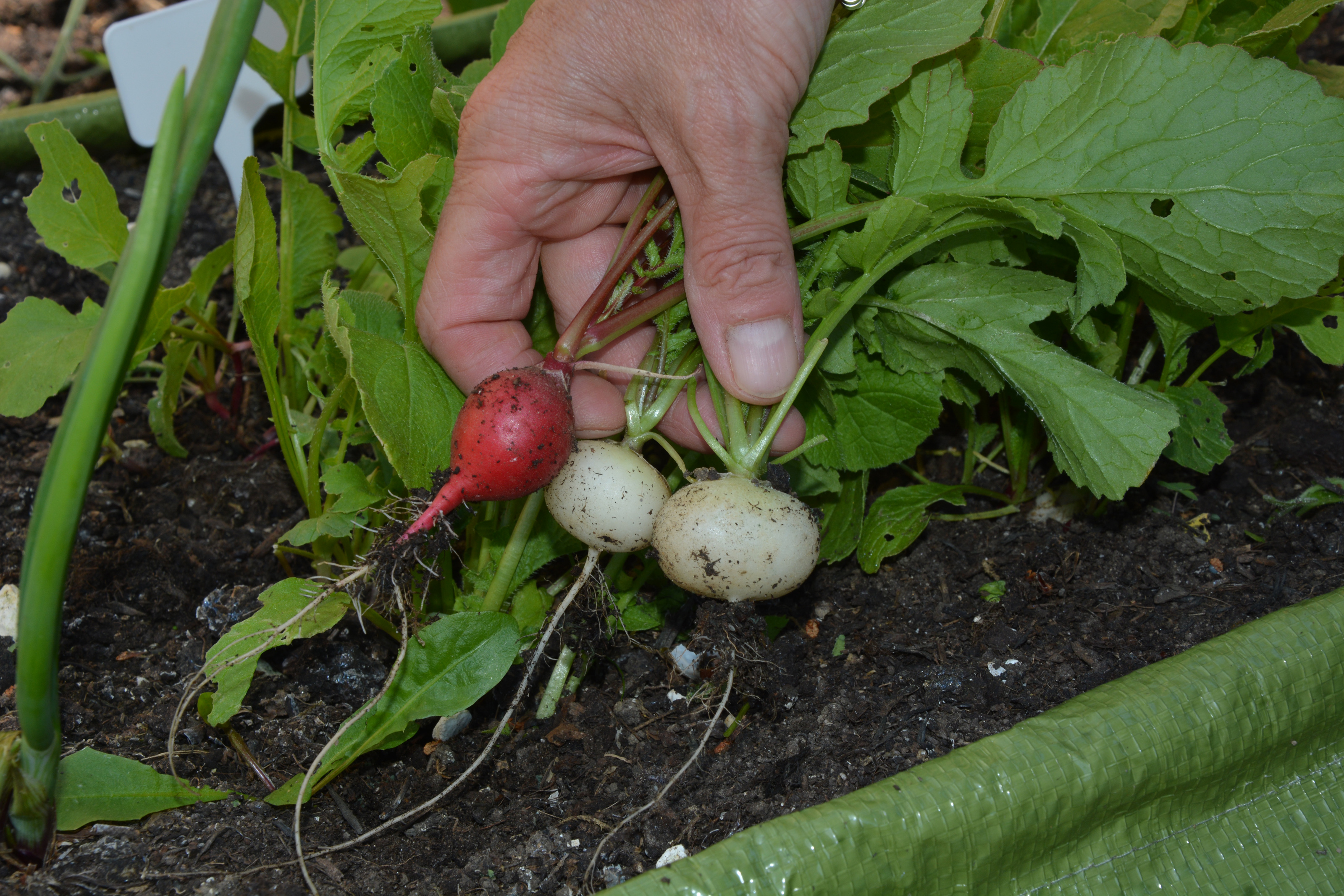
Do radishes need full sun?
One of the best things about growing radishes is that they will do really well in a sunny spot, whether that's in the soil, in a grow bag or container as part of your patio ideas, or even in a pot on a windowsill.
In the height of summer when temperatures are particularly high, radishes may grow better in the partial shade of other crops.
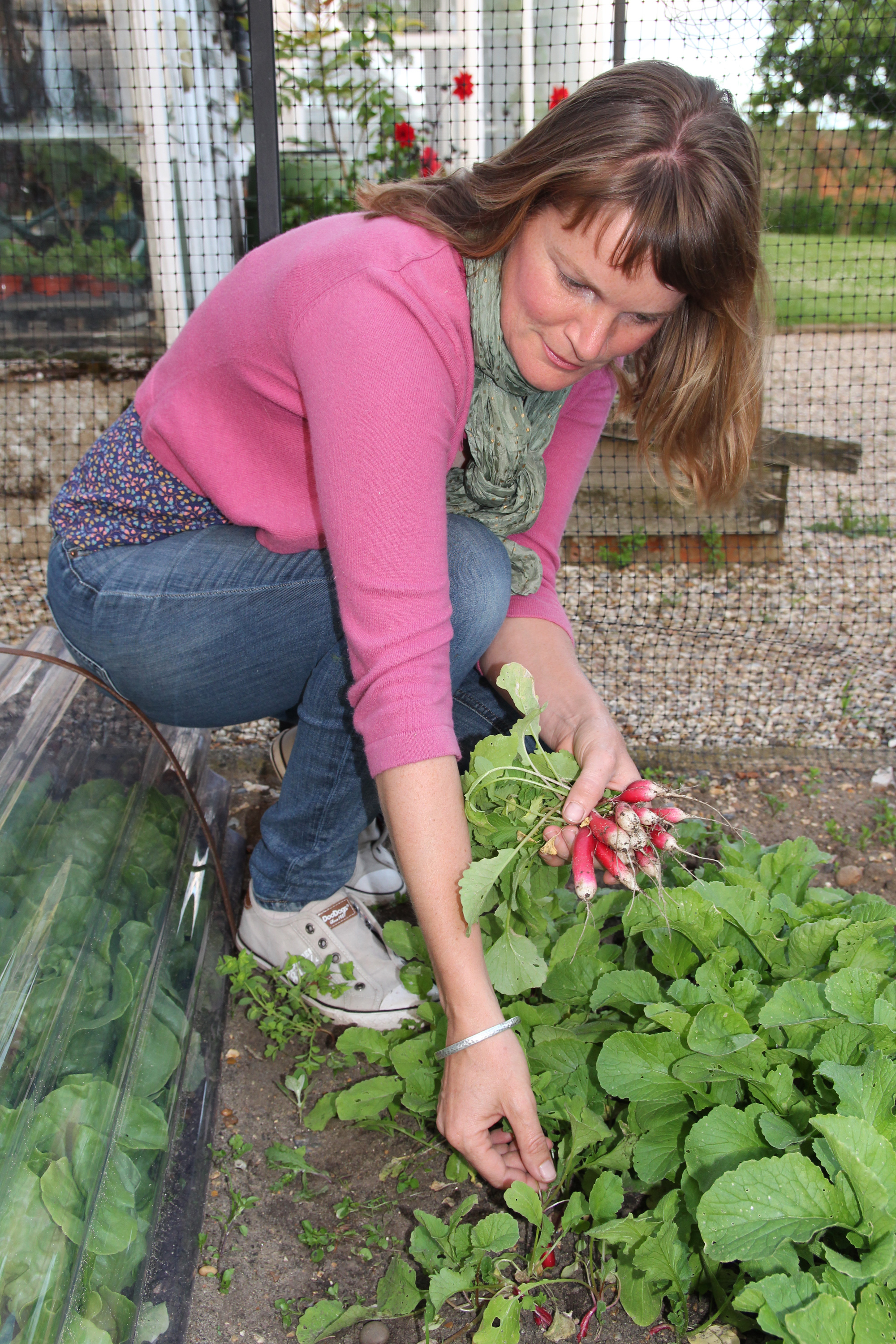
What are ideal companion plants for radishes?
When it comes to companion planting for growing radishes, lettuce is the classic combination as it's slower growing so won't impede the growth of the faster growing radishes.
Radishes can be grown amongst slower-maturing crops to fill the gaps when you harvest crops such as lettuce or beetroot. Don't forget, there are plenty of tips on how to grow beetroot in our guide.
Radishes can also be used as ‘markers’ for slow-to-germinate crops such as parsnips, to prevent seed beds for the slower-growing varieties being forgotten about and disturbed. Sow pinches of seed alternately so that the radishes can be pulled up without disturbing the parsnips.

Can you grow radishes in pots?
Another great benefit of growing radishes is that they make a brilliant container crop, so are a good choice if you are interested in growing vegetables in pots. Quick to mature, they’re the perfect choice for shallow container gardening ideas.
You can tuck pots of them in between other vegetables in your potager garden to fill gaps and make efficient use of the space, or put pots next to the kitchen door for easy picking throughout the season.

What are the common problems that affect radishes?
There are one or two things that might affect your success rate when it comes to how to grow radishes. But the good news is, to do well, radishes require little more than rich, free-draining soil that’s a fine tilth and plenty of water on a regular basis.
They will need thinning regularly, as they will bolt if they become overcrowded. If your plants become spindly it's a sure sign they need more space so make sure you let them breathe next time you sow seeds.
Radish seedlings can be affected by flea beetle attacks, which pepper the leaves with small holes. Damage is often superficial, but attacks can be prevented by adding a protective cover to the plants.
Seedlings are also at risk from slugs and snails. The longer the radish is left in the ground the more likely the chance of damage. Try the usual slug deterrent methods such as copper tape and beer traps. There's more suggestions for how to get rid of slugs in our guide.

Where to buy radish seeds
If you’re learning how to grow radishes, here’s our round-up of some of the best varieties to choose from.
You can buy radish seeds from a wide range of suppliers. Use our quicklinks below to head straight to leading suppliers where you can take your pick of the best that’s on offer.

Where to buy radish seeds in the UK
- Shop radish seeds at Amazon
- Shop radish seeds at Crocus
- Shop radish seeds at Dobies
- Shop radish seeds at Mr Fothergill's
- Shop radish seeds at Suttons
- Shop radish seeds at Thompson & Morgan
- Shop radish seeds at Waitrose Garden
Where to buy radish seeds in the US
- Shop radish seeds at Amazon
- Shop radish seeds at Burpee
- Shop radish seeds at Home Depot
- Shop radish seeds at Walmart
5 different varieties of radish to try
Feeling inspired to try growing radishes? We've rounded up some of our favorite varieties, so give them a go in your plot. You'll love the results.

1. ‘French Breakfast’
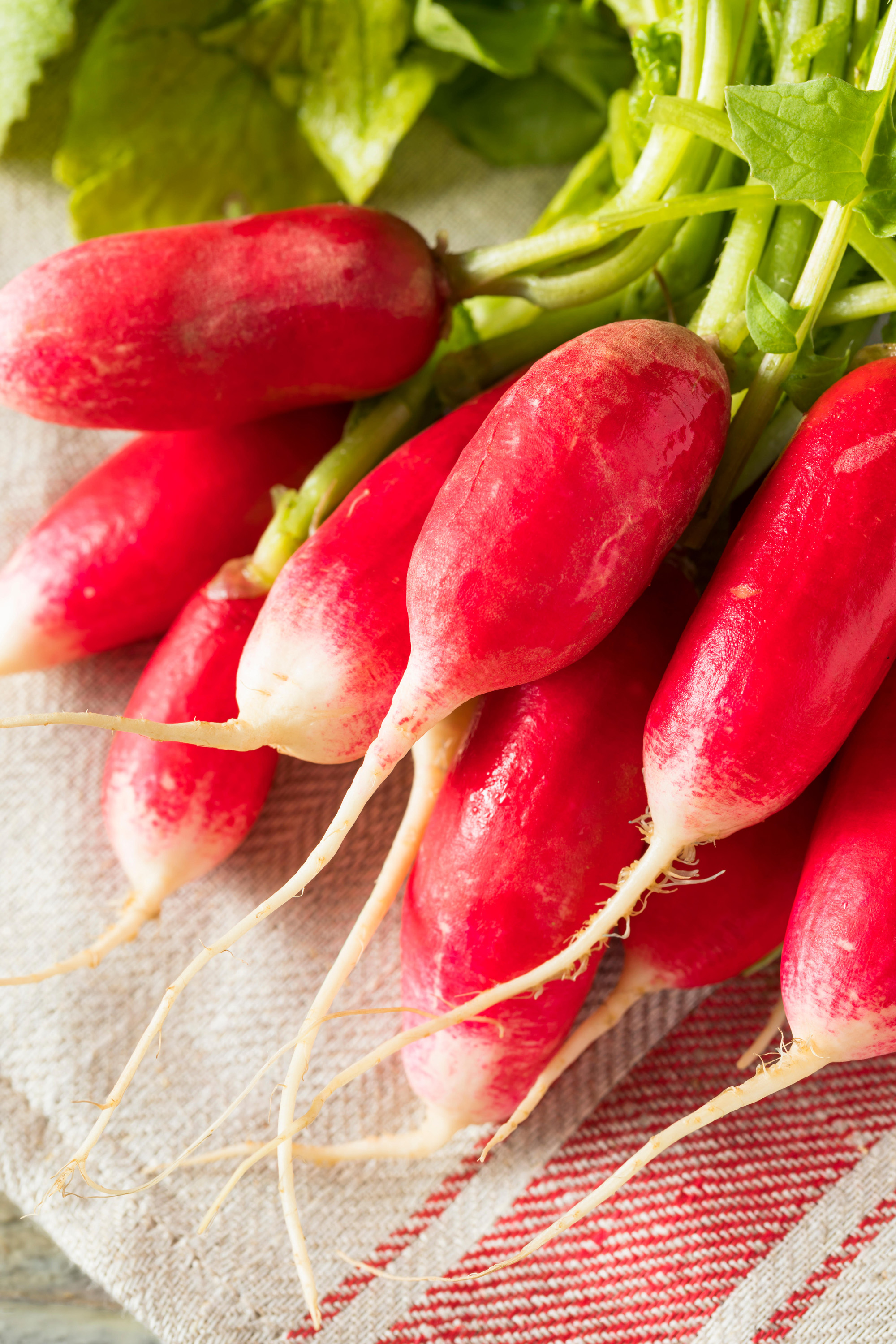
This popular radish is a vigorous, fast maturing cylindrical variety that produces oval red roots with white tips. It's a reliable cropper that's ideal for growing in containers. Its crisp, crunchy roots have a strong flavor that will spice up your summer salads, and its elegant shape looks good on a plate of crudités too.
2. ‘Scarlet Globe’
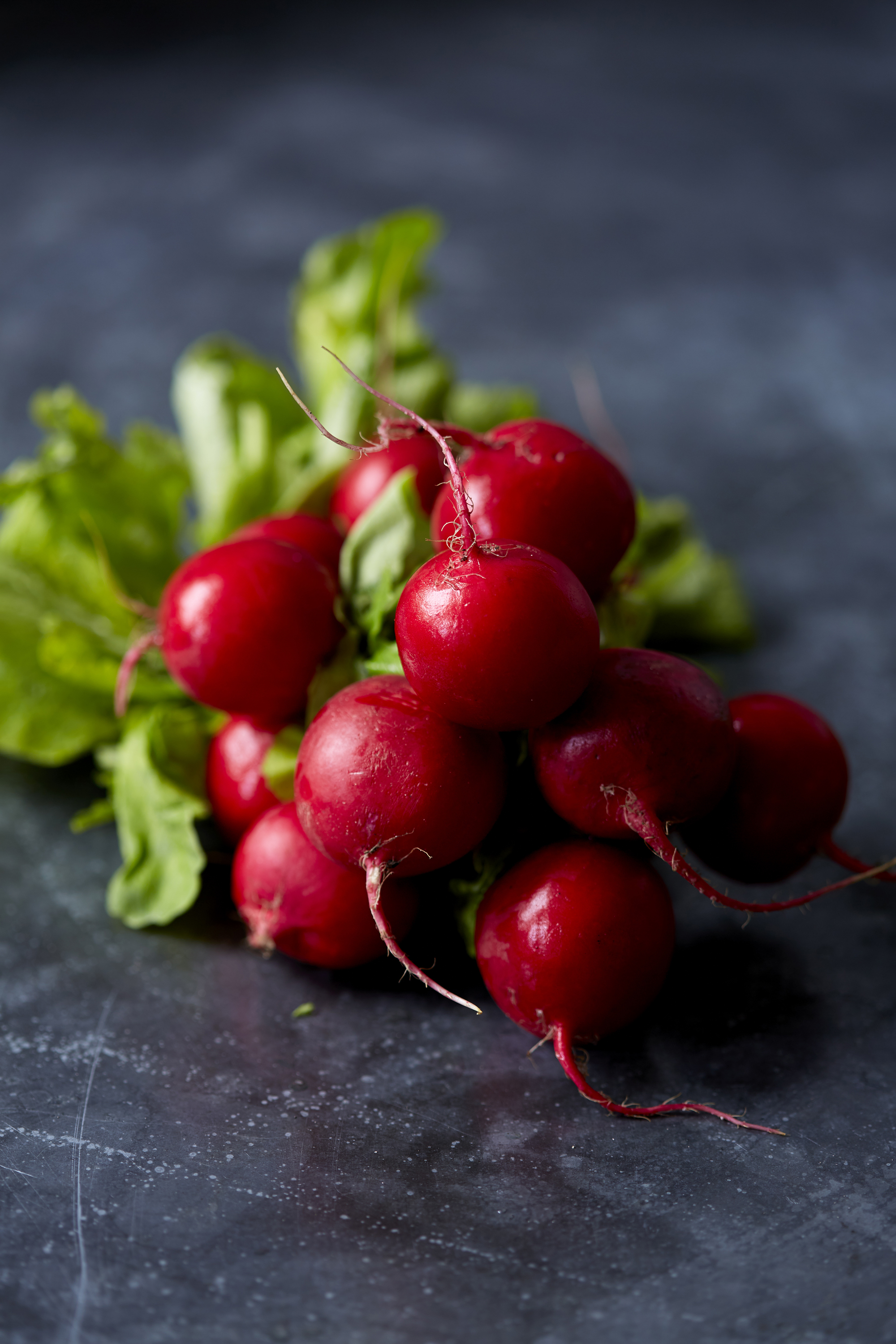
A fast-growing radish variety with deep red roots and crisp white flesh. It's quick maturing and ready to harvest in just 20/25 days after sowing. It's a popular choice that's easy to grow and a good old-fashioned variety that always seems to do well. Also suitable for earlier sowings under glass as well as outdoors.
3. ‘White Icicle’

As quick to grow as red-skinned varieties, this pure white form produces roots 10cm long, which have a crisp texture, fresh flavor and are slow to bolt. Ideal for salads or oriental dishes, and great for growing as a quick crop to sow between rows of slower growing vegetables. Sow outdoors from February to September.
4. ‘Watermelon’
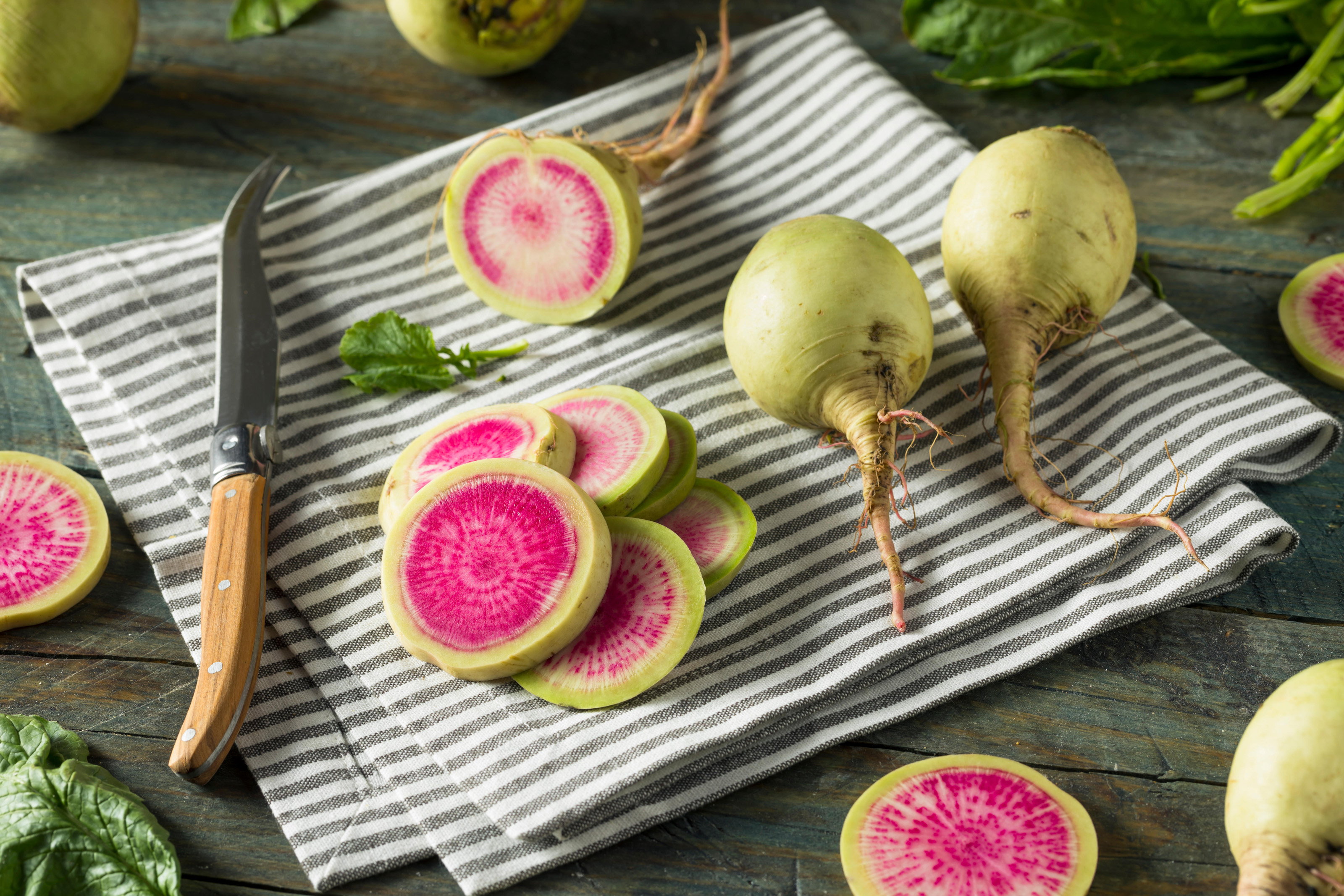
This special Chinese heirloom radish is a firm, crisp variety with a light, sweet flavor and just a hint of pepper. The lovely smooth white globes reveal rose pink centers when cut. Good eaten raw and finely sliced to appreciate its vibrant-pink color but also good in stir fries. Direct sow in rows or scatter over a small area.
5. 'Mooli'
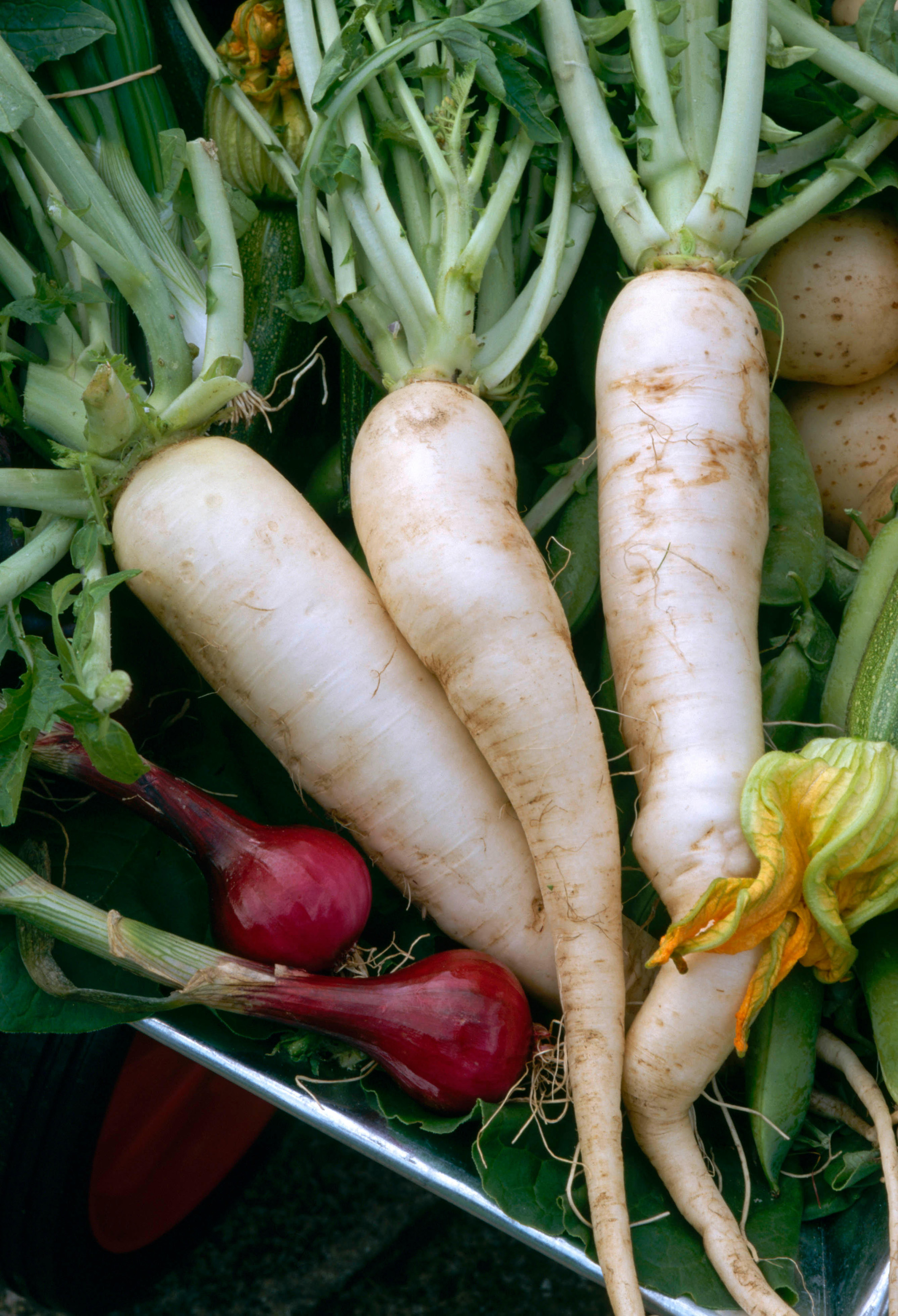
This large-rooted cylindrical radish is generally white but occasionally red or green, and can be eaten raw, stir-fried or cooked. It has a different texture and flavor to summer radishes. Some of the mooli radishes, such as ‘Mooli Mino’, can be eaten as a summer radish but it's generally best for autumn and winter cropping.
Now you know how to grow radishes, why not add some other easy grow crops to your veg plot too? Our guides on how to grow carrots and how to grow spinach have tons of tips to get you started.

Lifestyle journalist Sarah Wilson has been writing about gardens since 2015. She's written for Gardeningetc.com, Livingetc, Homes & Gardens, Easy Gardens and Modern Gardens magazines. Having studied introductory garden and landscape design, she is currently putting the skills learned to good use in her own space where the dream is establishing a cutting garden.
